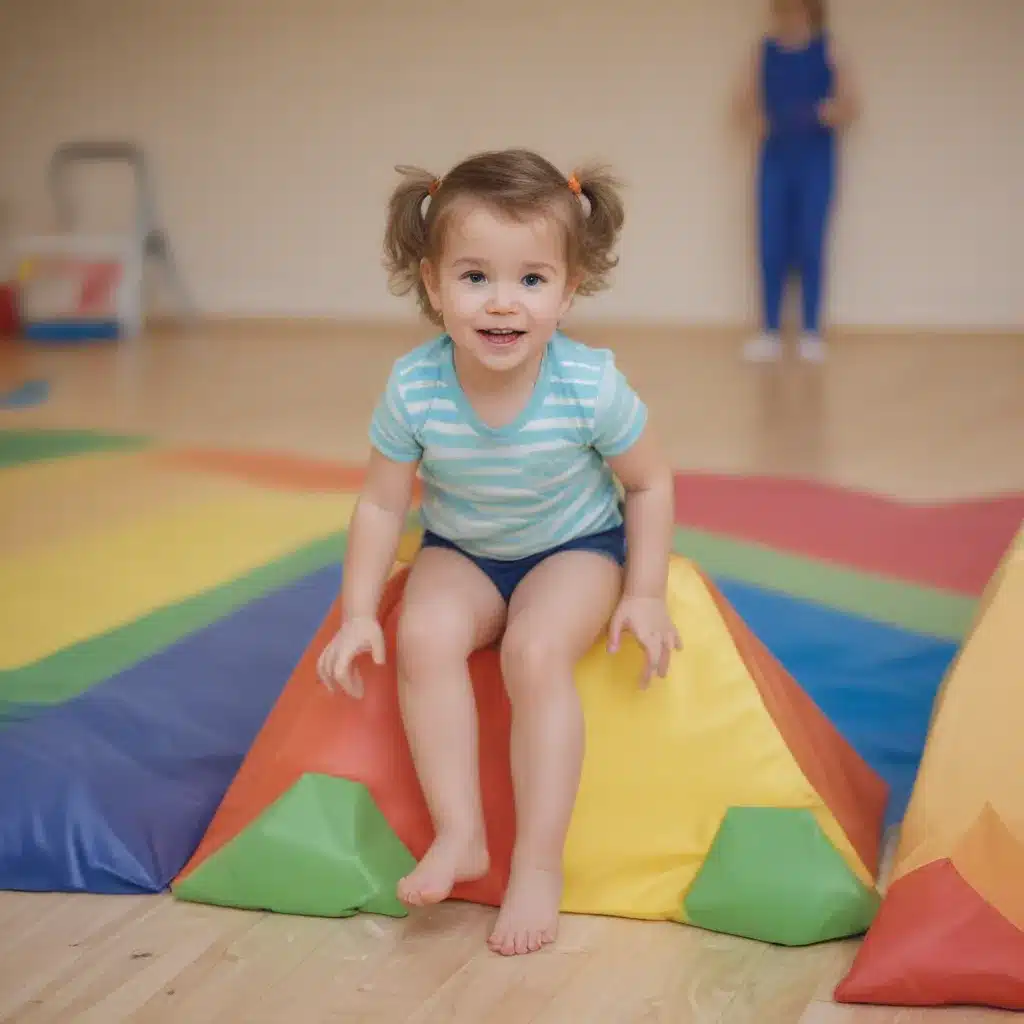Navigating the Perilous World of Baby Milestones
As a proud parent of an 8-month-old, I’ve recently found myself in a rather precarious situation. My little one is starting to pull herself up, explore her newfound mobility, and attempt to conquer the world one wobbly step at a time. And with this newfound independence comes a whole host of challenges – namely, the dreaded “toddler tumbles.”
It all started innocently enough. My daughter would occasionally lose her balance and take a tumble, bumping her head on the floor. At first, I brushed it off, thinking, “Eh, it’s all part of the learning process.” But then, things took a turn for the worse. She managed to fall from a chair and a sofa (not her high chair, mind you) and WHAM – straight onto the hard, unforgiving floor.
Now, I’ll admit, I started to panic a little. “What if this leads to long-term problems?” I wondered. “Should I be worried about potential brain injuries?” As any concerned parent would, I immediately turned to the trusty internet for answers.
The Good, the Bad, and the Bruised
After scouring the depths of the World Wide Web, I stumbled upon some insightful information from BrainLine. The experts there explained that while learning to walk is a crucial milestone, it often comes with its fair share of bumps and bruises.
“Babies need to explore and experiment because that is how they learn,” the article reassured me. “That said, we need to closely supervise the baby’s explorations to prevent falls and collisions with corners or other sharp surfaces.”
Phew, that’s a relief. So a few tumbles here and there are par for the course, as long as I’m keeping a watchful eye. But the article went on to caution that if a fall from a height does occur, there are some symptoms to watch out for, like loss of consciousness or other signs of a concussion.
Conquering the Mental Blocks
Now, as a former gymnast myself, I know all too well the challenges of overcoming mental blocks. I remember the frustration of being able to execute a skill with ease one day, only to freeze up completely the next. And it seems my little one may be experiencing something similar.
Luckily, I stumbled upon an insightful article from Tumbling Coach Sahil that shed some light on this phenomenon.
“Your mental block is not something that recently popped up nor does it mean that you’re suffering from some type of psychological condition,” Sahil reassured. “In fact, if you’re currently suffering from a mental block or had one before, it means your brain’s survival mechanism is alive and well.”
Ah, so it’s all just a part of the brain’s natural self-preservation instinct. Good to know I’m not alone in this struggle!
Sahil went on to outline a comprehensive formula for overcoming these mental blocks, which includes steps like perfect visualization, skill-specific drills, and a gradual progression of surfaces. He even shared some fascinating research on the benefits of squeezing a stress ball in your non-dominant hand before attempting a challenging skill.
Strength, Patience, and Perseverance
As I delved deeper into Sahil’s insights, I realized that the key to conquering mental blocks lies not only in the technical aspects but also in building physical and mental strength.
“Weak athletes get injured more often, have less confidence, require more time to master skills, blame others for their lack of ability, and are generally not at the top of their game,” he bluntly stated. “It may sound harsh, but it’s the brutal truth.”
Ouch, but he’s got a point. If I want my daughter to confidently tackle her tumbling goals, I need to ensure she’s physically and mentally prepared for the challenge.
A Roadmap to Success
So, with Sahil’s formula in hand and a renewed sense of determination, I’m ready to tackle this mental block head-on (no pun intended). Here’s the plan:
-
Identify the Trigger: We’ll take a deep dive to uncover the root cause of my daughter’s hesitation, whether it’s a past injury, external pressure, or something else entirely.
-
Perfect Visualization: She’ll spend time each day visualizing herself nailing her tumbling passes, building those crucial neural connections.
-
Skill-Specific Drills: We’ll work on mastering the individual components of her troublesome skills through targeted drills, building up her confidence step-by-step.
-
Gradual Surface Progression: We’ll start on the most forgiving surfaces and work our way up, constantly filming her progress to boost her belief in her abilities.
-
Strength and Conditioning: To prevent future injuries and build that mental fortitude, we’ll focus on a comprehensive training plan that addresses both physical and mental wellness.
And of course, throughout this entire journey, we’ll rely on the most essential ingredient: patience. As Sahil wisely said, “The time it takes is the time it takes.” We won’t rush this process, because I know that with the right approach, my daughter will come out of this stronger, more confident, and ready to take on the world (without all the, you know, face-planting).
Bringing It All Together
As I reflect on this newfound knowledge, I can’t help but feel a sense of gratitude. Not only have I learned valuable strategies to keep my little one safe from tumbles, but I’ve also discovered a roadmap for overcoming mental blocks that I know will serve us well, both on the tumbling floor and in life.
So, parents, if you find yourselves in a similar situation, take heart. With the right mindset, a solid plan, and a whole lot of patience, you too can navigate the perilous world of baby milestones and emerge victorious. And who knows, maybe one day, your little one will be the one sticking the landing on the Home Curtains Philadelphia stage, cheering on the next generation of fearless little tumblers.



